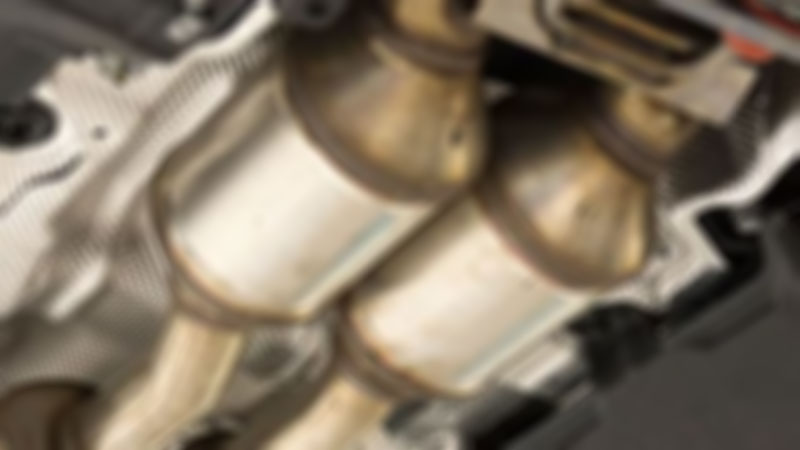A “cat delete” is a modification that involves removing the catalytic converter from a vehicle’s exhaust system. This modification has gained popularity among automotive enthusiasts for its potential performance benefits. However, there are important factors to consider before deciding to perform a cat delete on your vehicle. In this blog post, we’ll explore the cat delete process, its pros and cons, and the costs involved.
Contents
What is a Cat Delete
A cat delete, or catalytic converter delete, is the removal of the catalytic converter from a vehicle’s exhaust system. The catalytic converter is a device that reduces harmful emissions from the engine by converting pollutants into less harmful gases. By removing the catalytic converter, the exhaust flow becomes less restricted, potentially leading to increased horsepower and improved engine performance.
Cat Delete Pipe and Cat Delete Kit
When performing a cat delete, you’ll need to replace the removed catalytic converter with a cat delete pipe or use a cat delete kit. These components are designed to fit seamlessly into the exhaust system in place of the catalytic converter:
- Cat delete pipe: A simple, straight pipe that replaces the catalytic converter, allowing for unrestricted exhaust flow.
- Cat delete kit: A more comprehensive solution that includes a cat delete pipe and any necessary hardware, gaskets, and mounting components for a proper installation.
How Much is a Cat Delete
The cost of a cat delete can vary depending on several factors, including the type of vehicle, the specific components used, and labor fees if you choose to have the modification professionally installed. Here is a general breakdown of potential costs:
- Cat delete pipe or kit: The cost of a cat delete pipe or kit can range from $50 to $300, depending on the quality and materials used.
- Labor: If you choose to have a professional mechanic perform the cat delete, labor costs can range from $100 to $300, depending on the complexity of the installation and regional labor rates.
- Additional expenses: You may also incur additional costs for gaskets, mounting hardware, or any necessary modifications to your vehicle’s exhaust system.
Pros and Cons of a Cat Delete
Before deciding to perform a cat delete on your vehicle, it’s essential to weigh the potential benefits and drawbacks:
Pros
- Increased horsepower: Removing the catalytic converter can result in a less restricted exhaust flow, potentially leading to increased horsepower and torque.
- Improved exhaust sound: A cat delete often results in a more aggressive and louder exhaust note, which many enthusiasts appreciate.
- Reduced weight: Eliminating the catalytic converter can slightly reduce the vehicle’s overall weight, contributing to improved performance.
- Potential fuel efficiency: In some cases, a cat delete may result in improved fuel efficiency due to the engine operating more efficiently without the restriction of the catalytic converter.
Cons
- Increased emissions: Removing the catalytic converter leads to higher emissions of harmful pollutants, contributing to air pollution.
- Potential legal issues: Cat deletes are illegal in many regions due to their impact on emissions, and vehicles without a catalytic converter may not pass emissions testing.
- Engine management complications: Modern vehicles may require additional tuning or modifications to the engine management system to function properly without a catalytic converter.
- Voided warranty: Performing a cat delete may void your vehicle’s warranty, leaving you responsible for any repairs or damages related to the modification.
- Reduced resale value: Vehicles without a catalytic converter may have a reduced resale value due to potential legal and emissions concerns.
- Poorer air quality: By increasing harmful emissions, a cat delete can negatively impact air quality and contribute to respiratory issues in vulnerable populations.
- Emissions testing failure: Vehicles with a cat delete may fail mandatory emissions testing, leading to fines, penalties, and the requirement to reinstall the catalytic converter.
- Ethical and environmental concerns: The negative impact of increased emissions on air quality and the environment may be a moral concern for some vehicle owners.
Legal and Environmental Considerations
Before opting for a cat delete, it’s crucial to consider the legal and environmental implications. Removing the catalytic converter can lead to increased emissions, which is not only harmful to the environment but also illegal in many regions. In the United States, for example, the Clean Air Act prohibits the removal or tampering of emissions control devices, including catalytic converters.
Additionally, vehicles that have undergone a cat delete may not pass emissions testing, which is required in many states for vehicle registration renewal. Failure to pass emissions testing can lead to fines, penalties, and even the requirement to reinstall the catalytic converter.
Before deciding to perform a cat delete, research your local regulations and emissions testing requirements. Keep in mind that while the potential performance benefits may be appealing, the legal and environmental consequences should not be overlooked.
Final Words
A cat delete is a modification that involves removing the catalytic converter from a vehicle’s exhaust system, potentially resulting in increased horsepower, improved exhaust sound, and reduced weight. However, there are significant drawbacks to consider, including increased emissions, potential legal issues, engine management complications, and voided warranties.
Before deciding to perform a cat delete on your vehicle, weigh the pros and cons and research your local regulations and emissions testing requirements. While the performance benefits may be tempting, it’s essential to consider the potential legal and environmental consequences before committing to this modification.
